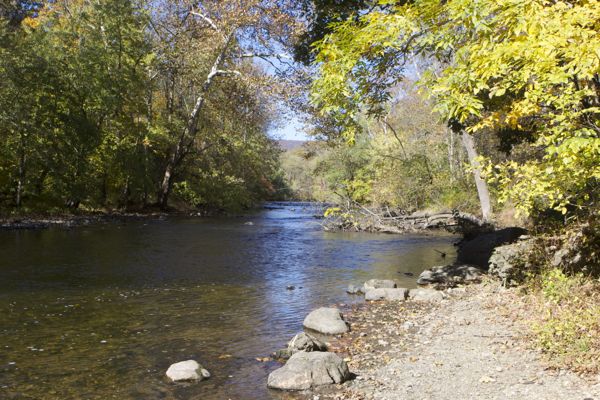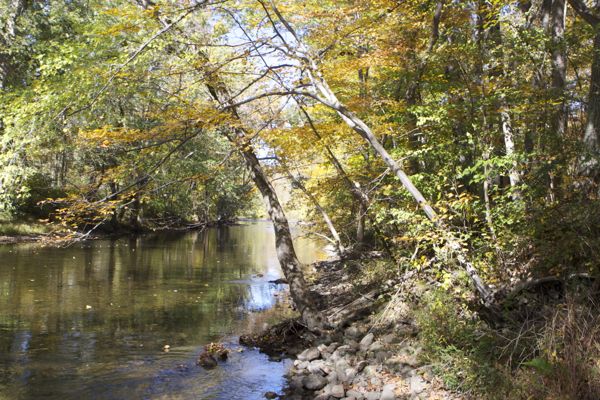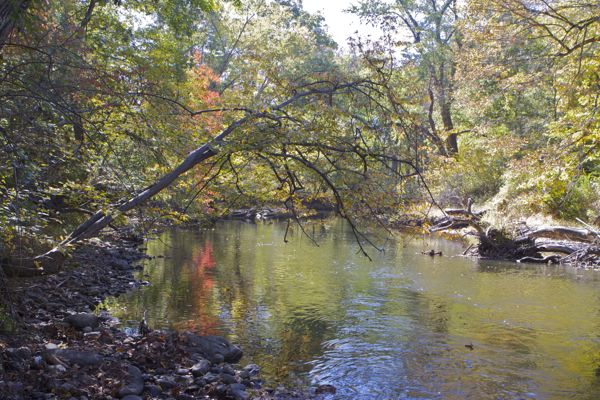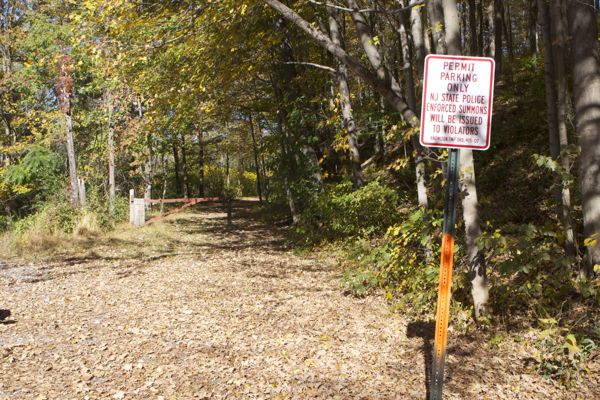An Ode On The Paulins Kill – An “Exceptional” Resource
As doth eternity: Cold Pastoral!When old age shall this generation waste,Thou shalt remain, in midst of other woeThan ours, a friend to man, to whom thou say’st,“Beauty is truth, truth beauty,—that is allYe know on earth, and all ye need to know.” ~~~ Ode on a Grecian Urn (Keats)
We respect our readers’ sense of truth and beauty – and strive for both.
After our disappointment at Sidney Brook yesterday, we headed north to the Paulins Kill for salvation.
The DEP designated portions of the Paulins Kill a “Category One” (C1) water on January 6, 2003.
Remarkably, that critical regulatory fact is ignored by the Christie DEP and their friends in Sussex County in the “Paulins Kill Restoration Plan (2012) – a truly remarkable omission given the non-point source pollutant focus of that plan.
C1 waters are those that have “exceptional ecological, water supply, fisheries, recreational or aesthetic characteristics”. ( see NJ Surface Water Quality Standards (SWQS) @: NJAC 7:9B)
More importantly, under the Clean Water Act and NJ’s Surface Water Quality Standards, C1 waters are protected from any “measurable change” to “existing water quality” (EWQ). Keep those two phrases in mind.
EWQ is defined to incude the physical, chemical, and biological integrity.
Look how broadly DEP’s federal EPA approved SWQS regulations define “measurable change” – models, predictions, “might adversely impact”:
“Measurable changes” means changes measured or determined by a biological, chemical, physical, or analytical method, conducted in accordance with USEPA approved methods as identified in 40 C.F.R. 136 or other analytical methods (for example, mathematical models, ecological indices) approved by the Department, that might adversely impact a water use (including, but not limited to, aesthetics).
No measurable change in EWQ would mean that DEP could require that EWQ be characterized PRIOR to any discharge of a pollutant or land disturbance. That would require collection of at least 4 quarters of site specific physical, chemical, and biological data to be statistically and scientifically representative of seasonal fluctuations.
This could authorize DEP to require that a permit applicant develop a site specific calibrated model to assess pollutant runoff from land disturbance and the resulting impact on EWQ.
This also means that based on that baseline characterization of EWQ, DEP could deny permits or approvals for any activity that causes or contributes to things like:
- erosion or scouring or temperature increase (i.e. a measurable physical change); or
- increase in suspended or dissolved solids, salts, or any chemical pollutant (i.e. a measurable chemical change); or
- harm to any aquatic species or aquatic dependent species (individual or population; plant or animal) that lives in the waterbody or its buffer (i.e. a measurable biological change).
Now how radical is that?
THIS IS WHY I’VE BEEN URGING PIPELINE OPPONENTS TO FOCUS ON DEP ISSUANCE OF A WATER QUALITY CERTIFICATE.
To assure that level of protection of existing water quality protection from any activity that generates storm water and creates non-point source pollution, one tool DEP developed is the 300 foot wide buffers along C1 waterbodies as a storm water water quality “best management practice”.
But the 300 foot buffer requirements are just one tool –
DEP has multiple additional tools to enforce the SWQS for C1 waters of no measurable change in EWQ, such as: wetlands permits, water quality certifications, stream encroachment permits, Municipal Stormwater permits, water quality management plans, NJPDES permits, and direct enforcement authority.
For example, how would it be possible fora pipeline contractor to construct access roads, equipment staging areas, and cross C1 streams without creating a measurable change” to EWQ or disturbing vegetation and soils in the 300 foot C1 buffer?
So, here are the critical questions activist must focus on:
1. is DEP requiring the numeric and statistically representative characterization of the physical, chemical and biological parameters of “Existing Water Quality” BEFORE granting any permit that might impact EWQ?
2. Is DEP enforcing the C1 standard of “no measurable change” to EWQ in issuing planning and permit approvals?
3. Because the C1 policy is a federally approved, federally funded, and federally enforceable State Surface Water Quality Standard standard under the Clean Water Act, is US EPA Region II monitoring and supervising DEP’s planning, permitting, and enforcement of the C1 standard?
The answer to all of the above is a resounding NO.
And now for some more beauty:
We conclude with the backstory of Paulins Kill:
In spring & summer of 1994, after I blew the whistle on DEP and Gov. Whitman’s corrupt strategy to cover up mercury contamination of freshwater fish, while DEP managers and the AG’s Office were trumping up their various charges and trying hard to force me out of the Department, DEP Commissioner Bob Shinn did the equivalent of banishing me to Siberia.
I was ordered out of my 7th floor Trenton Office and told to report to Green Acres field office in Hamilton.
When I reported to work, Green Acres Administrator didn’t know what to do with me. I had no knowledge or experience in land acquisition.
So, he gave me a State car and a clip board with various tax maps and forms and told me to drive up to the Paulins Kill every day and inventory properties.
I had no idea what I was doing at the time and enjoyed the daily hikes – but that effort contributed to the Paulins Kill Trail.





